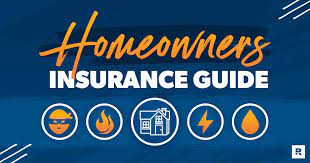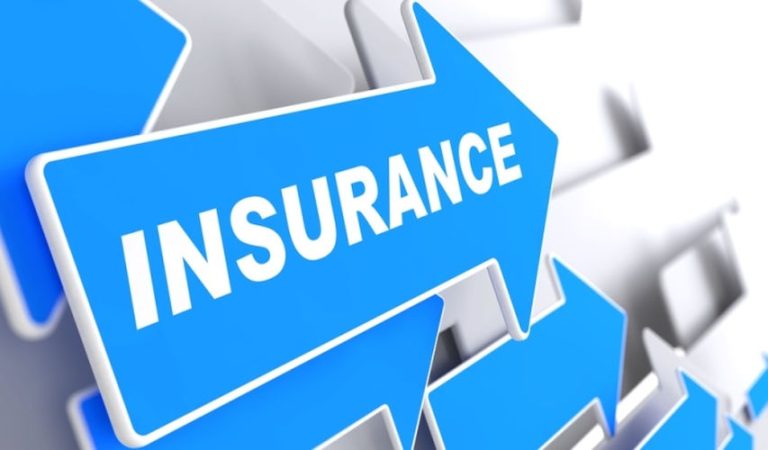
Introduction:
Owning a home is a significant milestone in one’s life, representing stability, security, and a sense of accomplishment. However, along with the joy of homeownership comes the responsibility of safeguarding your investment. Homeowners insurance is a crucial aspect of this protection, offering coverage for unforeseen events that could otherwise lead to financial devastation. In this comprehensive guide, we will delve into the intricacies of homeowners insurance coverage, helping you navigate the complexities and make informed decisions to secure your home.
I. The Fundamentals of Homeowners Insurance:
Homeowners insurance, also known as home insurance, is a policy designed to protect homeowners from various risks that could result in financial loss. These risks may include damage to the structure of the home, personal belongings, and liability for injuries that may occur on the property. Understanding the basic components of homeowners insurance is essential for making informed choices about coverage.
A. Dwelling Coverage:
Dwelling coverage is the core component of homeowners insurance. It provides protection for the structure of your home, including walls, roof, floors, built-in appliances, and other structural components. In the event of covered perils such as fire, vandalism, or natural disasters, dwelling coverage helps repair or rebuild your home.
B. Personal Property Coverage:
Personal property coverage extends protection to your belongings inside the home, such as furniture, electronics, clothing, and other personal items. This coverage is crucial in the event of theft, damage, or destruction caused by covered perils. It’s essential to conduct a thorough inventory of your possessions to determine the appropriate level of personal property coverage needed.
C. Liability Coverage:
Liability coverage safeguards homeowners from legal responsibilities arising from bodily injury or property damage that occurs on their property. If someone is injured on your premises and files a lawsuit, liability coverage helps cover legal fees, medical expenses, and potential settlement costs. This coverage is vital for protecting your assets and financial well-being.
D. Additional Living Expenses (ALE) Coverage:
If your home becomes uninhabitable due to a covered peril, ALE coverage assists with additional living expenses. This may include costs for temporary housing, meals, and other necessities while your home is being repaired or rebuilt. Understanding the limits and duration of ALE coverage is crucial for planning in case of displacement.
II. Types of Homeowners Insurance Policies:
Homeowners insurance policies come in various forms, each offering a different level of coverage. It’s important to choose a policy that aligns with your specific needs and budget. The three primary types of homeowners insurance policies are:
A. HO-3 (Special Form):
HO-3 is the most common type of homeowners insurance and provides comprehensive coverage for both the structure and personal belongings. It covers a broad range of perils, excluding only those specifically listed in the policy. This makes HO-3 a versatile and widely chosen option for homeowners.
B. HO-2 (Broad Form):
HO-2 is a more limited form of homeowners insurance that covers specific perils listed in the policy. While it may offer cost savings, it’s essential to carefully review the covered perils to ensure they align with potential risks in your region. Common perils include fire, theft, vandalism, and certain natural disasters.
C. HO-1 (Basic Form):
HO-1 is a basic homeowners insurance policy that provides coverage for a limited set of perils. It is a more budget-friendly option but offers minimal protection compared to HO-3 and HO-2. HO-1 policies are less common, and homeowners often opt for more comprehensive coverage.
III. Factors Influencing Homeowners Insurance Premiums:
Several factors influence the cost of homeowners insurance premiums. Understanding these factors can help homeowners make informed decisions and potentially lower their insurance costs. Key considerations include:
A. Location:
The geographic location of your home significantly impacts insurance premiums. Homes in areas prone to natural disasters, such as hurricanes, earthquakes, or floods, may have higher premiums. Additionally, proximity to fire hydrants, fire stations, and crime rates in the area can influence costs.
B. Home Characteristics:
The age, size, construction materials, and overall condition of your home affect insurance premiums. Older homes or those with outdated electrical, plumbing, or heating systems may be considered higher risks and result in higher premiums.
C. Deductible:
The deductible is the amount you must pay out of pocket before the insurance coverage kicks in. Choosing a higher deductible can lower your premiums, but it’s essential to ensure you can afford the out-of-pocket expense in the event of a claim.
D. Credit Score:
In some regions, insurance companies consider your credit score when determining premiums. Maintaining a good credit score can potentially lower your homeowners insurance costs.
E. Home Security:
Installing security features such as alarm systems, smoke detectors, and deadbolt locks can reduce the risk of theft or damage, leading to lower insurance premiums.
F. Claims History:
A history of frequent claims may result in higher premiums, as insurers perceive a higher risk associated with the property. Being cautious about filing claims for minor incidents can help maintain lower premiums over time.
IV. Common Exclusions and Optional Coverages:
While homeowners insurance provides extensive coverage, there are certain exclusions that homeowners should be aware of. Additionally, optional coverages can be added to tailor the policy to specific needs.
A. Common Exclusions:
- Earthquakes and Floods: Standard homeowners insurance typically does not cover damage caused by earthquakes or floods. Separate policies or endorsements may be required for such coverage.
- Maintenance Issues: Normal wear and tear, as well as damage resulting from lack of maintenance, are generally not covered by homeowners insurance.
- High-Value Items: Coverage for high-value items such as jewelry, art, or collectibles may be limited. Additional endorsements or separate policies may be necessary to fully protect these items.
B. Optional Coverages:
- Scheduled Personal Property: For high-value items, adding scheduled personal property coverage ensures that specific items are fully covered, even if they exceed standard limits.
- Identity Theft Protection: This coverage helps with the costs associated with identity theft, such as legal fees and lost wages.
- Umbrella Liability Insurance: For homeowners seeking additional liability coverage beyond the limits of their standard policy, umbrella liability insurance provides extra protection.
- Sewer and Water Backup: This coverage protects against damage caused by sewer or water backup, which is not typically covered in standard policies.
Conclusion:
Homeowners insurance is a critical component of responsible homeownership, offering protection against a wide range of risks. Understanding the fundamental aspects of coverage, types of policies, factors influencing premiums, and common exclusions empowers homeowners to make informed decisions. By carefully evaluating their needs and risks, homeowners can select a policy that provides adequate protection while remaining within their budget. Regularly reviewing and updating insurance coverage ensures that it continues to meet the evolving needs of homeownership, providing peace of mind and financial security for the years to come.






